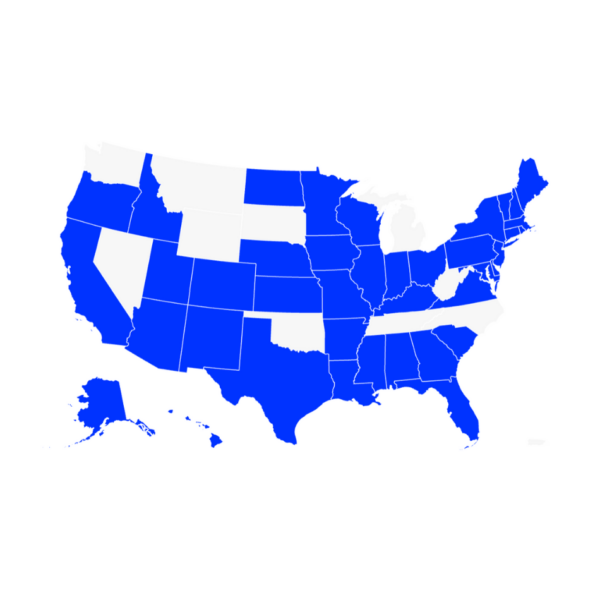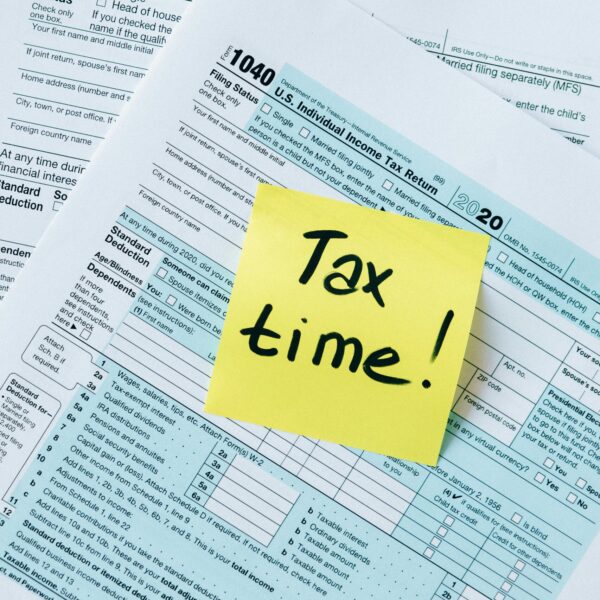As an innovative business leader, you may already be aware of federal research and development (R&D) tax credits, but you might not realize most U.S. states also offer their own R&D tax credits. It’s important to understand the difference between state and federal R&D tax credits, who qualifies for each type, and which states have unique rules and regulations. This article will dive into the extra incentives provided by state R&D tax credits, as well as any additional considerations your business may need to keep in mind.
With two-thirds of U.S. states offering some sort of state R&D tax credit, there’s a good chance your business may be able to take advantage of them if you are also eligible for the federal R&D tax credit. Just like at the federal level, these tax credits are for businesses who spend money on eligible R&D expenses in a state. In general, states follow the same qualification guidelines as the federal R&D tax credit, but details like the calculation method, definition of certain terms and regulations, and carryover periods can vary. Although it may seem tough to navigate due to the many variables, the experts at TriNet Clarus R+D can assist you in evaluating eligibility within those states along with your federal R&D study.
In most states, income tax is imposed on the net taxable income of a business allocated to the state. The state’s taxable income is determined using Federal taxable income as a starting point, then the portion of the business that is attributable to activity in the state or apportionment is calculated.
But how do you know if your business’s activities are “connected” to a specific state, or to multiple states? When it comes to determining whether you may be eligible for an R&D tax credit to help offset your tax liability in certain states, there are several things to look at:
- Nexus: the amount of connection a business has to a state. States can use different standards for determining that connection.
- Physical presence standard: an out of state business must have offices, employees, agents, or property in state to establish income tax
- Economic presence standard: an out of state business must earn income from economic activity in the state to establish income tax
- Apportionment factor: determined based on the portion of sales, payroll, and property in the state. Also determines the amount of net income that can be subject to net income tax by the state.
As mentioned, state R&D tax credits generally follow the same or similar qualification criteria outlined for the federal R&D tax credit. Section 41 of the U.S. tax code says that qualifying work for the R&D tax credit must meet the requirements in the four-part test:
- Permitted Purpose: the purpose of a qualifying project must be related to creating a new or improving an existing business component.
- Technological in Nature: work needs to rely on principles of physical, biological, or computer science or engineering.
- Elimination of Uncertainty: when work began on a qualifying project, there would have been uncertainty related to your capability to create the product or improvement, the methodology you would use, or the correct product design.
- Process of Experimentation: the project must involve a process by which you tested alternatives and resolved the uncertainty above.
In the instructions for most state R&D tax credits will typically include a reference to requirements in Section 41 of the Internal Revenue Code, but you may also see some exceptions or terms that are defined differently for purposes of the state tax credit.
Let’s take a closer look at a few states that have unique rules and typically have many companies claiming the state R&D tax credit:

California
When using the regular method of calculation, California’s R&D tax credit closely aligns with the federal R&D tax credit applying a fixed base percentage determined from historical gross receipts and R&D spend. The tax credit amount is determined considering gross receipts and qualified research expenses (QREs) related to R&D work done in California. However, California defines gross receipts as the sale of real, tangible, or intangible property held for sale to customers and delivered to a purchaser within California. This limited definition means receipts related to license payments are generally excluded from the R&D tax credit calculation.
The state R&D tax credit in California is generally equal to 15% of qualified expenses that exceed a base amount. Businesses claim this state R&D tax credit on Form FTB 3523 with their business return. The tax credit is non-refundable and permitted to be used to reduce tax liability. If the state R&D tax credit exceeds tax liability or can otherwise not fully be utilized, unused tax credits can be carried forward indefinitely.
Taxpayers can also elect to use the alternative incremental tax credit method for their California state R&D tax credits. Using this method, you calculate your R&D expenses from the past 3 years, find the average, and use 50% of that average as your base amount. You then subtract the base amount from your current year’s R&D expenses and add a 15% tax credit value to the difference.
Taxpayers are not permitted to select this method if they have no California gross receipts. Additionally, taxpayers who elect to use this method must continue to use it for each year moving forward, unless they receive permission from the California Tax Board to switch. Use of the California Alternative Incremental Credit is a permanent election.
Georgia
Unlike California, Georgia offers only one calculation method. Using this method, the base amount is determined by multiplying a ratio of the past three years of Georgia research expenses and taxable income by taxable net income. The tax credit is generally equal to 10% of QREs that exceed the base amount. Taxpayers can claim the tax credit on GA Form IT-RD with their business return. The tax credit is nonrefundable and is used to reduce up to 50% of a business’s income tax liability. Excess tax credits can be used to offset Georgia state payroll withholding tax, which is a great option for businesses with little to no income tax liability that not all other states offer. Claiming the withholding benefit must be done by filing GA Form IT-WH within 30 days after filing a timely Georgia income tax return. Similar to California, unused tax credits can be carried forward, but only for up to 10 years.
Pennsylvania
In Pennsylvania, businesses can submit their applications for the tax credit via the state portal between August 1st and December 1st in the year following the relevant tax credit year. The state R&D tax credit is allowed to be sold for cash if the tax credit exceeds the tax liability for the year, and unused tax credits can be carried forward for up to 15 years.
The calculation method for the Pennsylvania state R&D tax credit uses a base amount of either prior years’ average state R&D expenditures or 50% of the current year’s state R&D expenditures, whichever is greater. Additionally, a business must have at least two years of R&D expenditures. In Pennsylvania, the state R&D tax credit is tentatively calculated as 10% of qualified expenses that exceed the base amount.
The state determines a set total amount of funding for all tax credits claimed for a particular year. Approved tax credits are pooled and the full amount of funding for a year is allocated to all approved applications submitted before the deadline. Final tax credits are communicated via award letters that are mailed to taxpayers beginning on May 1st of the year following application. All applications for the Pennsylvania state R&D tax credit require detailed information about the business, such as R&D spend by location, relevant project descriptions and evidence of meeting the four-part test, breakdowns of contractor spend, and business ownership information. It’s also important to note that the state frequently requests additional information and will not approve tax credits without receiving.
At TriNet Clarus R+D, our team of experts can help evaluate whether the states where you pay taxes offer R&D tax credits that may be eligible to offset your tax liabilities. We can also provide guidance on effective ways to claim these tax credits, helping you maximize your incentives. Get started today by scheduling a free consultation.
© 2024 TriNet Group, Inc. All rights reserved. TriNet Clarus R+D does not provide legal, tax or accounting advice. The information herein and the opinions expressed may not apply to your company or scenario, so you should consult with your own advisors on how best to proceed. This post may contain hyperlinks to websites operated by parties other than TriNet Clarus R+D. Such hyperlinks are provided for reference only. TriNet Clarus R+D does not control such web sites and is not responsible for their content. Inclusion of such hyperlinks on our website does not necessarily imply any endorsement of the material on such websites or association with their operators.










